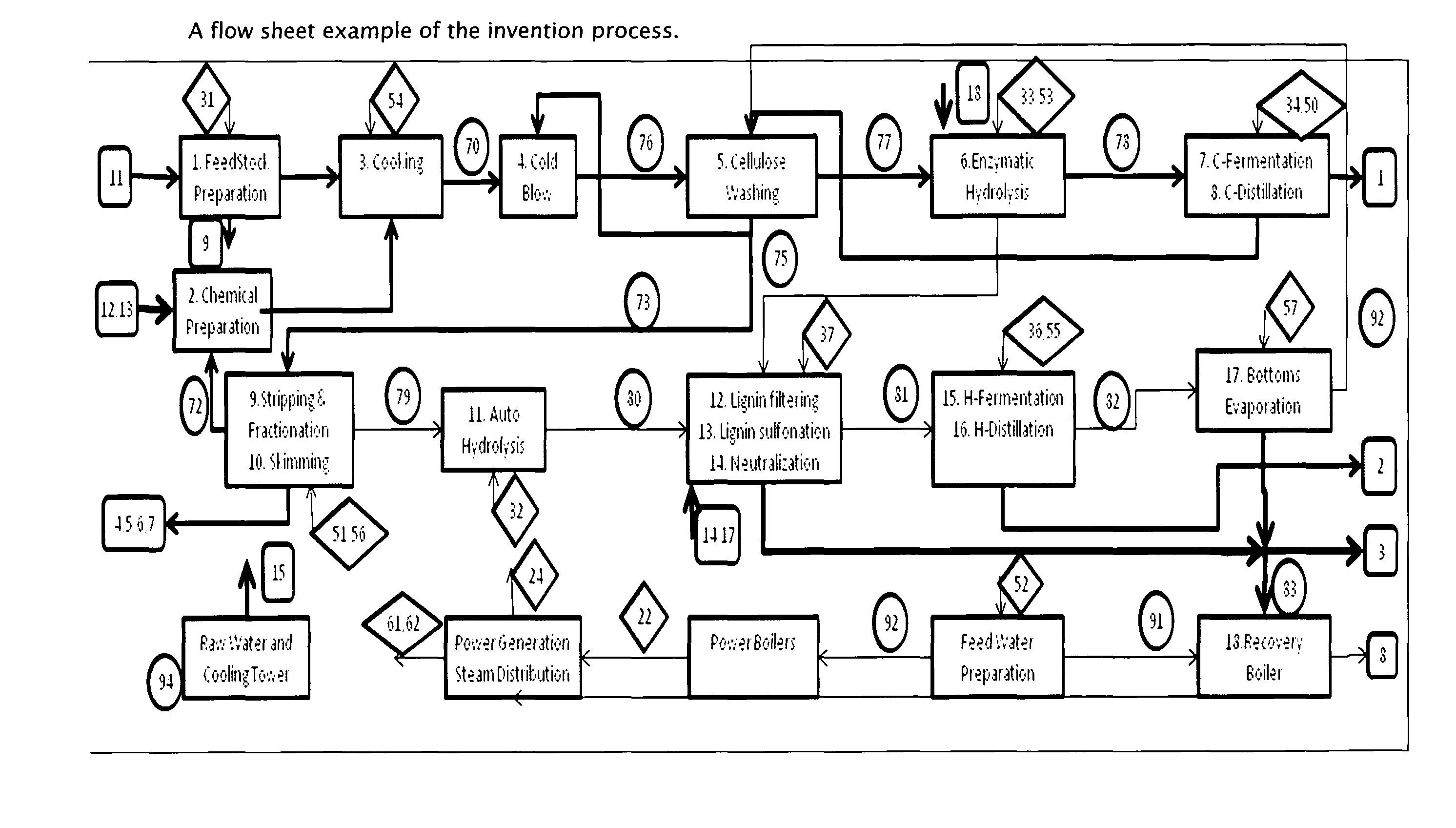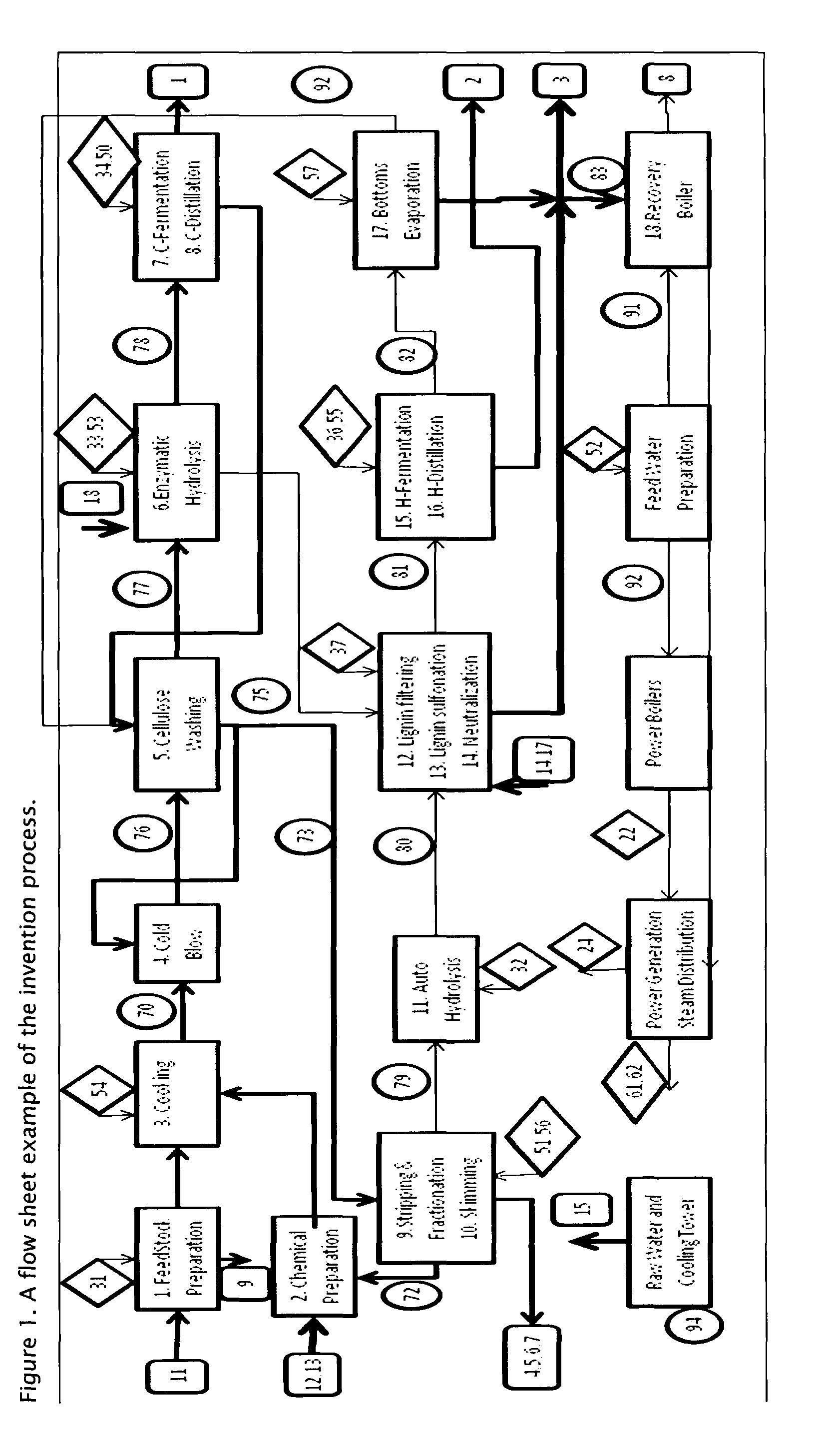Alcohol sulfite biorefinery process
a biorefinery and alcohol sulfite technology, applied in biofuels, cellulose treatment using microorganisms/enzymes, biofuels, etc., can solve the problems of low yield, low yield, and proposed solvents, and achieve the effect of dissolving softwood lignin and low cos
- Summary
- Abstract
- Description
- Claims
- Application Information
AI Technical Summary
Problems solved by technology
Method used
Image
Examples
Embodiment Construction
[0018]A biorefinery process to convert lignocellulosic material into alcohol and lignin derivatives through vapor phase cooking of lignocellulosic material with alcohol, water, and sulfur dioxide comprising the steps of:
[0019]1) Charging lignocellulosic material such as wood chips in to a pressurized cooking vessel, and optionally, using a dewatering device.
[0020]2) Charging the cooking vessel with water, sulfur dioxide and alcohol.
[0021]3) Heating the contents of the vessel with direct or indirect steam.
[0022]4) Pumping or blowing the digested lignocellulosic material through a dilution valve to convert it to cellulose.
[0023]5) Washing the cellulose in several countercurrent steps. In one manifestation, an alcohol stripper is integrated to treat one or more of the washing filtrates to remove alcohol and reuse distillation bottoms for washing. This allows a high apparent dilution factor in that stage with low overall water usage.
[0024]6) Hydrolyzing the washed cellulose using enzyme...
PUM
| Property | Measurement | Unit |
|---|---|---|
| temperatures | aaaaa | aaaaa |
| temperatures | aaaaa | aaaaa |
| pressures | aaaaa | aaaaa |
Abstract
Description
Claims
Application Information
 Login to View More
Login to View More - R&D
- Intellectual Property
- Life Sciences
- Materials
- Tech Scout
- Unparalleled Data Quality
- Higher Quality Content
- 60% Fewer Hallucinations
Browse by: Latest US Patents, China's latest patents, Technical Efficacy Thesaurus, Application Domain, Technology Topic, Popular Technical Reports.
© 2025 PatSnap. All rights reserved.Legal|Privacy policy|Modern Slavery Act Transparency Statement|Sitemap|About US| Contact US: help@patsnap.com


